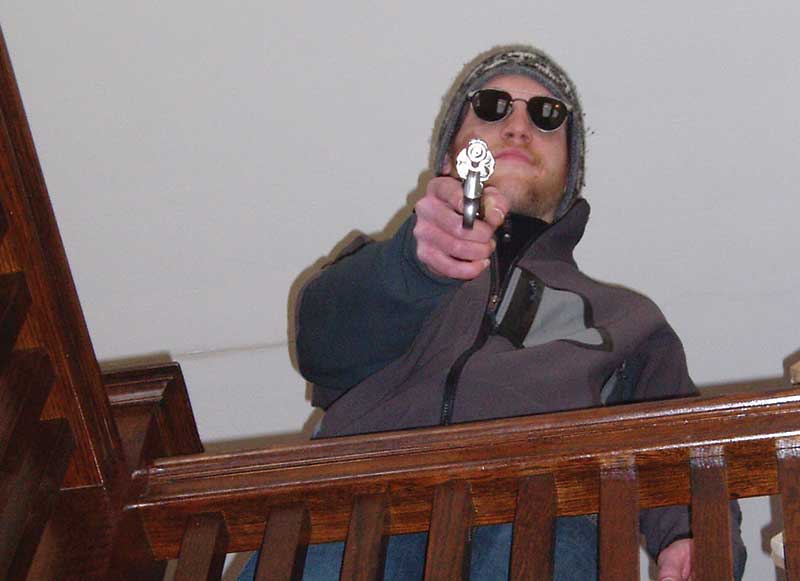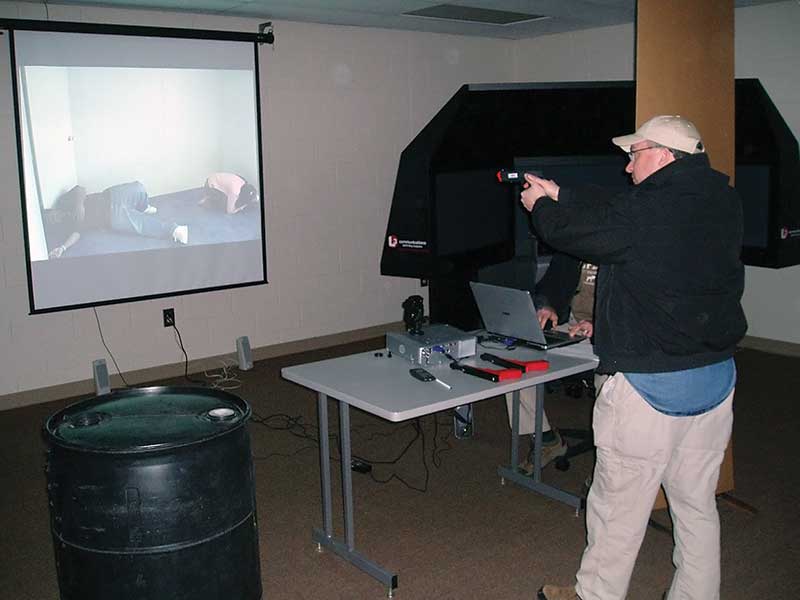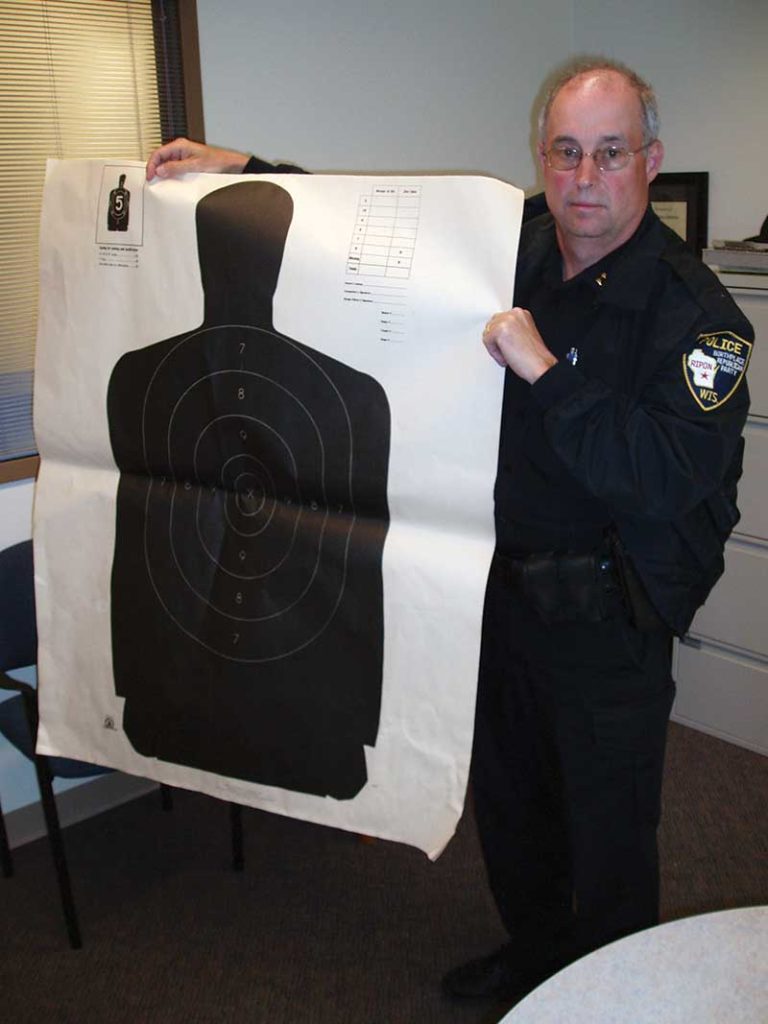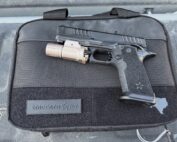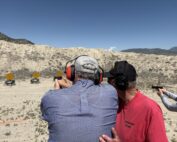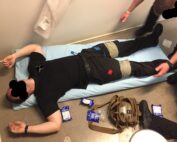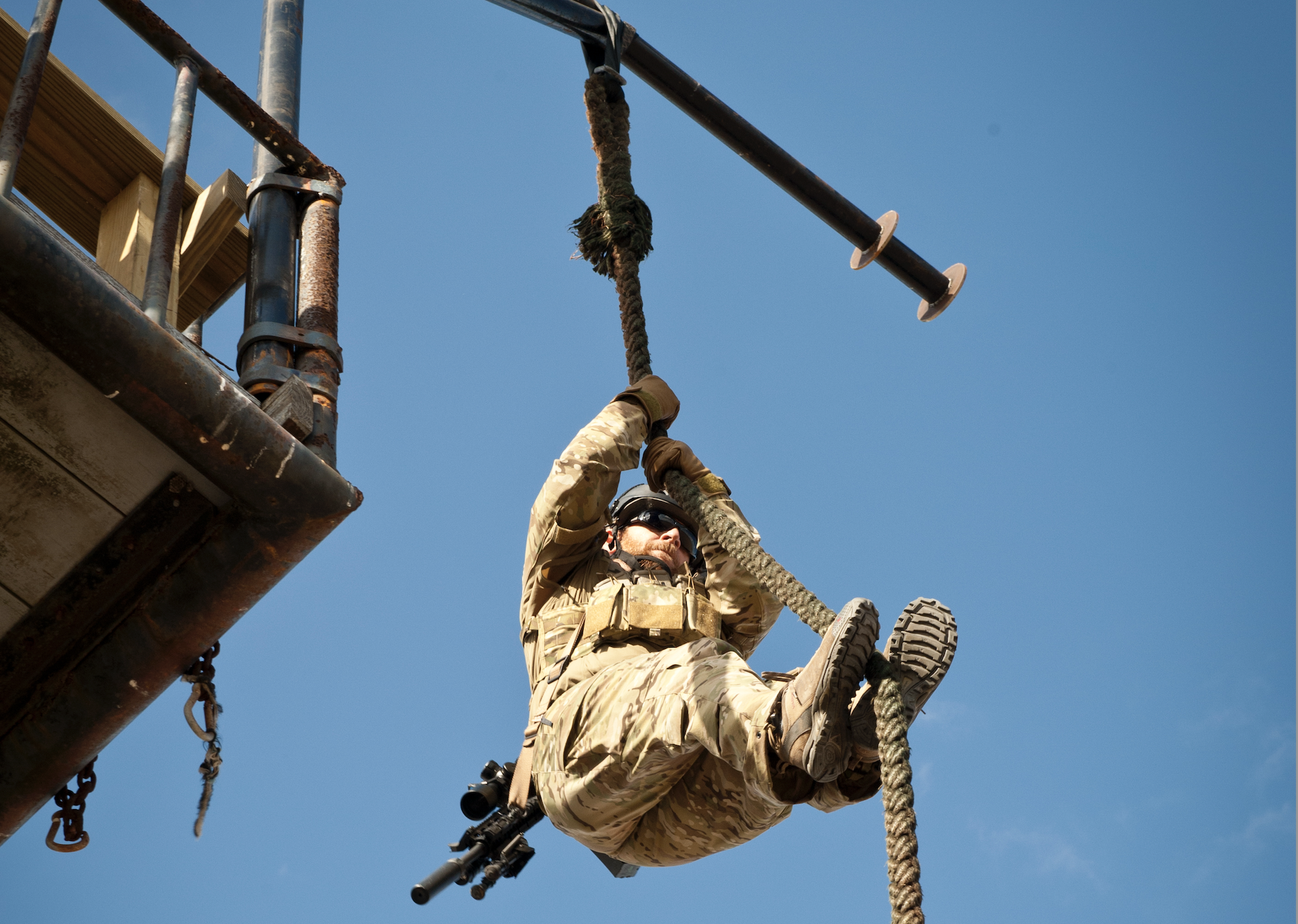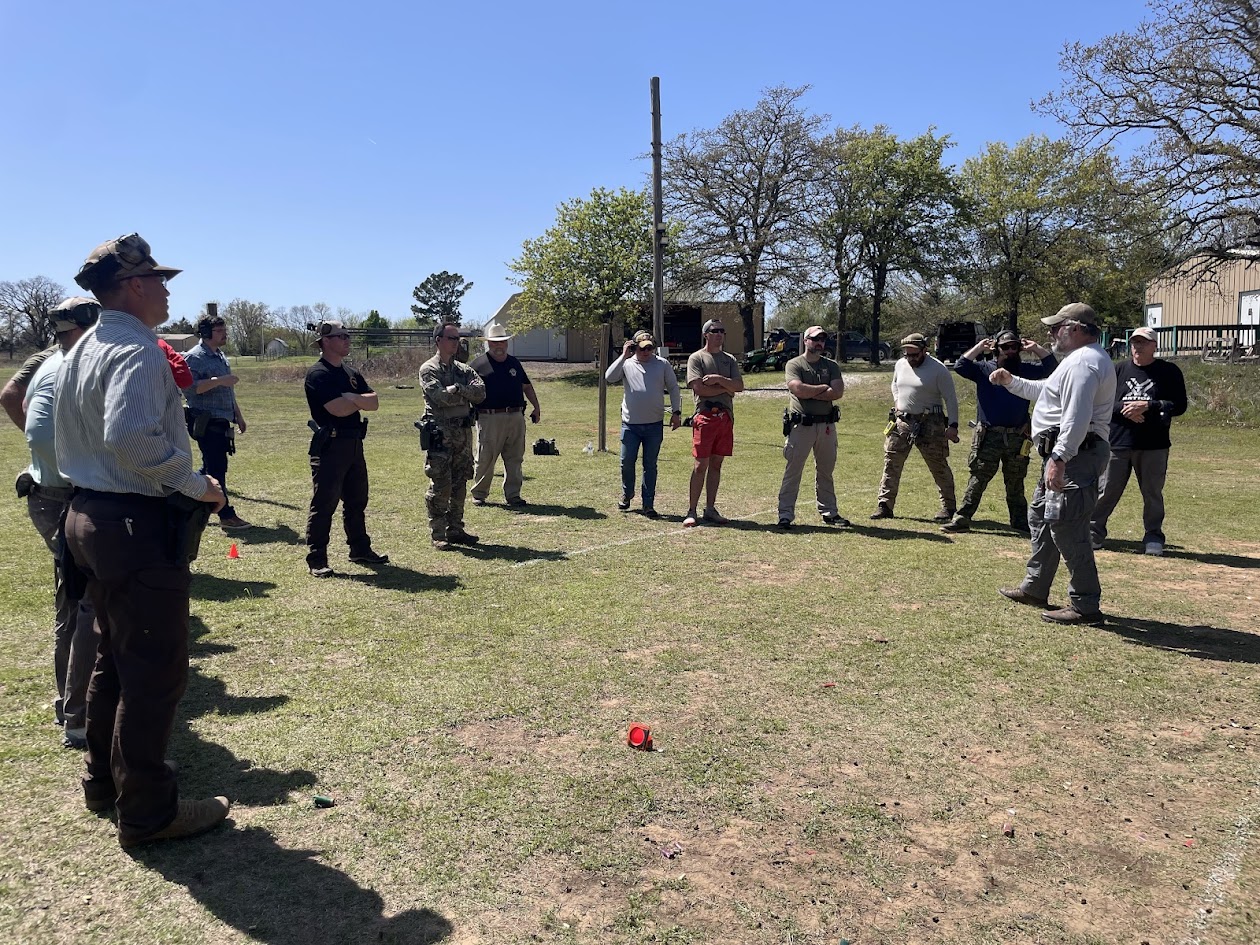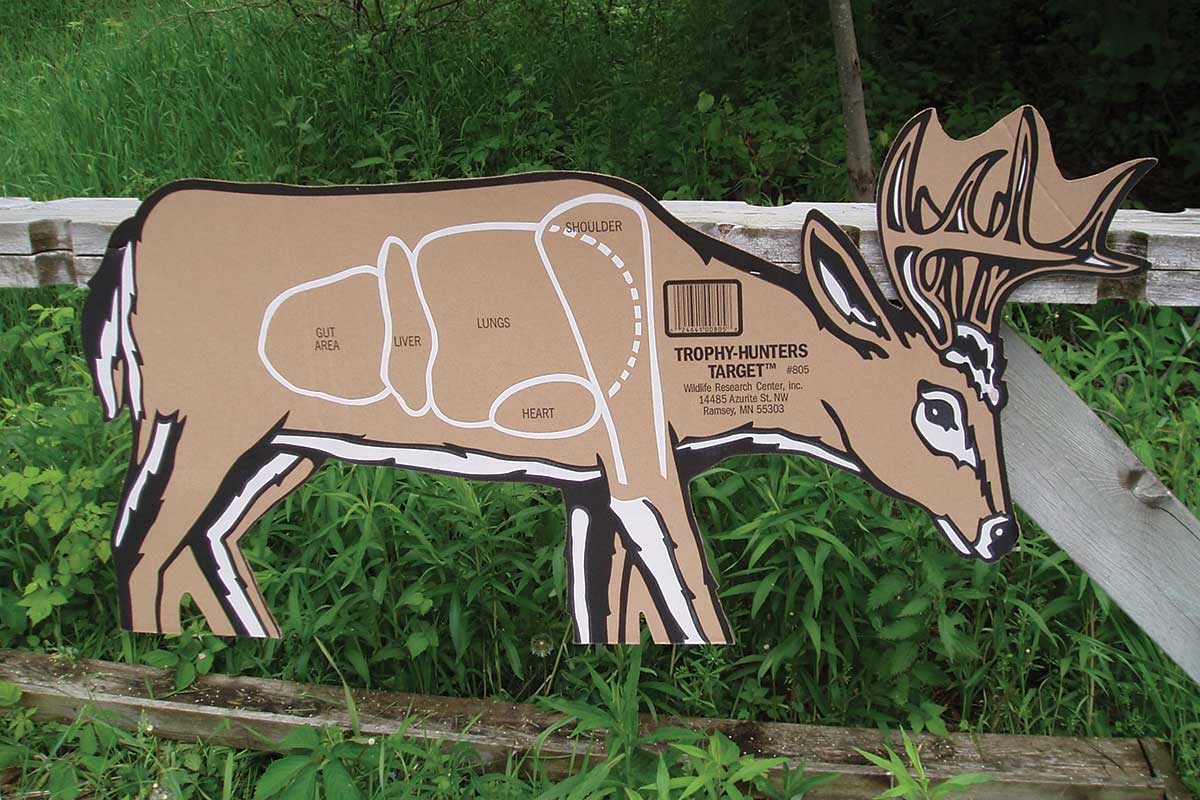
ACJF09_ShootingXRay3_4-800
A few years ago a cop I trained was involved in a shooting. He shot his opponent twice, center of mass, then lowered his muzzle to assess the effect as his department had trained him to do. Surprisingly, his adversary’s reaction to the 9mm JHP bullets that had shredded his chest was to charge. The cop, an IDPA champion shooter, executed a “Bill Drill,” placing 6 shots into his opponent’s mediastinum as fast as he could hit. His attacker staggered, but continued to offer violence. The cop raised his sights and, 3D-visualizing the brainstem deep inside his attacker’s head, fired one last bullet finishing the fight.
His shooting was exemplary: a 100 percent hit ratio — nine out of nine shots in vital zones. Yet, by following his department’s protocol to “shoot two then assess,” he almost lost the fight. When asked why he fired nine times, he replied, “Eight shots weren’t enough, and ten would have been too many.”
Cops training on two-dimensional targets on a square range may not have fared so well. Since this cop had learned to visualize target anatomy from any presentation, he had hard-wired his learning through quality reality-based training and had trained to fight through unexpected reactions. Therefore, he was able to go home to his family at the end of his shift.
I’m a doctor. I’m a shooter. I’m a trainer. But I’ve never been in a gunfight. I’ve been shot, and although a valuable lesson in survival, it’s not the same as winning a gunfight.
From the earliest days of development of Tactical Anatomy training, I’ve sought input from cops who’ve won gunfights. One of the things I’ve heard time and again is that the experience stirs a deep hunger for more better and realistic training. Each cop has an element of luck in his victories and he doesn’t want to leave anything to chance if he finds himself in another fight.
Their experiences led to the incorporation of the most realistic gunfighting simulations into Tactical Anatomy training. We can discuss anatomically correct hit zones forever, but until students actually put their sights on a humanoid target under realistic conditions and place shots where they count, the job isn’t finished.
WINNERS WIN
If you read the history of fighter airplanes and pilots, you’ll find a common thread from WWI to WWII and beyond. From Manfred von Richthofen to Chuck Yeager, high-scoring aces repeated the observation that most pilots that got shot down were rookies. The German air force determined in WWI that if a pilot survived three aerial combats, he was likely to become an ace. The trick was surviving those first three dogfights.
Cops who’ve learned gunfighting the hard way, such as Charles Askins, Bill Jordan, and Jim Cirillo, similarly noted cops who win two or three gunfights invariably go on to more victories. Their experience in the crucible of combat gives them an edge on less experienced opponents.
Cops who’ve come out on top in two or more gunfights in today’s politically correct world are often yanked from patrol duty. No department wants to be accused of allowing “killer cops” on the streets, even though that might be exactly what’s needed.
So how is a cop supposed to experience winning the two or three gunfights he’ll need to survive the next one?
REALITY BASED TRAINING
Reality based training allows rookies to win their first three gunfights without the real risk of being killed. Using realistic scenarios where a video projection or real person role-plays an offender, we can teach recognition of cues and appropriate reaction to a deadly threat. The computer operator or role player can “branch” his behavior depending on the trainee’s actions, which effectively simulates the dynamic nature of these encounters.
Tactical Anatomy training uses two levels: computer simulations, and force-on-force exercises. Unlike most RBT training, which is designed to train and test the full spectrum of police behavior and intervention, our scenarios are all deadly force scenarios — this is graduate school, not basic training. Tactical Anatomy RBT is like batting practice for baseball players. We focus on one aspect of police response only: effective shot placement.
COMPUTER BAD GUYS
Lt. Col. Dave Grossman convincingly argues violent video games have taught today’s youth how to kill. Armed forces and police trainers have found using computer simulations does indeed help personnel learn to effectively fight.
Computer simulators provide highly realistic learning opportunities. I’ve used a variety of simulators including FATS among others. I prefer IES’s Range 3000 and MILO simulators due to flexibility of programming and particularly the live-fire versions, allowing trainees to use duty sidearms for maximum realism. IES developed scenarios with anatomically appropriate target zones for my classes.
Computer simulators allow you to run more students through a greater number of realistic targeting situations in three hours than any training modality. This translates into faster, more easily retained learning due to the compressed timeframe.
It also allows you to discover weaknesses in your firearms training. At a 2006 Instructor class composed of experienced trainers, students were directed to “shoot two, then assess.” They did so. These skilled marksmen were surprised when many didn’t hit a vital tar-get zone until their third, fourth, or fifth shot. “What lesson could be drawn from this?” I asked. A seasoned veteran in the back row growled, “Teaching our people to shoot two, then assess is gonna get them killed.”
FORCE-ON-FORCE TRAINING
Simulator training is great, but it pales in comparison to what’s accomplished in a second training day utilizing force-on-force. Taking lessons learned, we put them to the penultimate test: fighting real guys with real guns. The training is modified, firing non-lethal training ammo along with protective equipment. But, it’s close to the real thing.
Increasingly difficult targeting angles are employed: up a flight of stairs, down from a window and a role-player charging with a knife. The objective is to hit vital target zones from any angle. By incorporating varying angles, movement low light and time pressure, we more closely approximate the four-dimension-al dynamics of real gunfights.
GRIM REALITIES
I try to inject as much reality into my training programs as I can. This includes exposure to the possibility of being shot and injured in a gunfight, and how to appropriately respond.
I give cops the straight goods on medical realities. Studies show the chance of dying from handgun GSWs is about 20 percent and cops shot by felons’ handguns face a mortality risk of less than 10 percent. However, cops who stop fighting when wounded are at a very high risk of being murdered by their adversaries.
In my training programs I show graphic photos and video dramatizations of gunshot wounds. This isn’t optional. It’s intended as psychological innoculation against a future eventuality. If a cop is shocked into immobility by the sight of a GSW in the middle of his first firefight, he may not be able to continue the fight.
Exposing students to this material and training them in dealing with GSW’s may pre-vent them having a lethal “deer-in-the-headlights” experience.
This approach is used in hospital disaster simulations. Studies show that first responders, EMTs and hospital staff who’ve successfully managed patients in stage makeup and bleeding ketchup, perform superbly when the real deal occurs. We should be training cops for gunfight injuries the same way.
GOALS
The goal of every deadly force trainer should be to teach where to shoot to win the fight, how to beat his adversary by getting inside the bad guy’s OODA loop, and how to finish the fight regardless of injury to himself or his fellow officers.
My friend Chief Jeff Chudwin says, “We are sworn to serve and protect, but before we can serve, we have to protect.” These training methods will pre-pare your officers well in performing the critical tasks of protecting those they serve.


 (No Ratings Yet)
(No Ratings Yet)